
Was Jesus Christ a Composite?
(This edited link originally researched by Jordan Maxwell)
Hindu
Hinduism consists of a Trimurti (trinity):
Brahma: The Creator
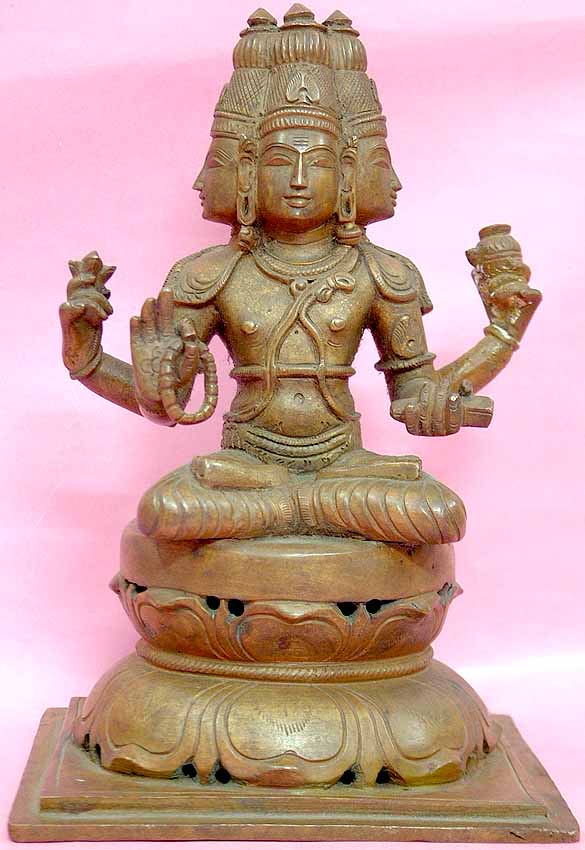
Vishnu: The Sustainer
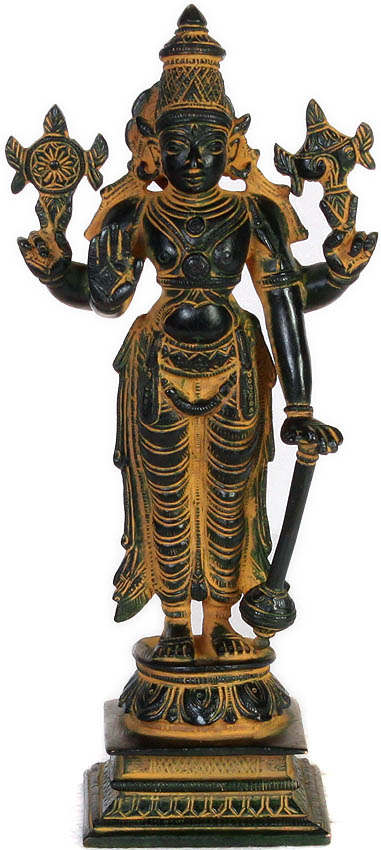
Shiva: The Destroyer
Christianity consists of another Trinity:
The Father
The Son
The Holy Ghost.
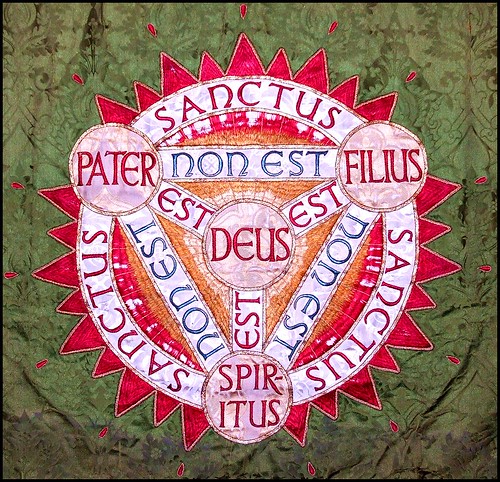
5,000 years ago Vishnu appeared in the form of a man before Devaki who conceived Krishna by Virgin Birth.
Hindus worship the God, Vishnu. Krishna “The Savior” is the eighth (8th) Avatar of the God, Vishnu.
The Higher Being takes on a mortal body, out of compassion, to help suffering humanity to attain perfection.
Krishna
Krishna was born of a Virgin.
Krishna was crucified, his arms extended on a cross.
What? Not an arrow in his foot?
Krishna descended into Hell.
Krishna arose from the dead.
Krishna ascended into Heaven.
Krishna’s 7 Classes of Miracles
1. Granting visions.
2. Visual perception over long distance.
3. The multiplication of small quantities of food.
4. Appearing in many places in less than a fleshy body.
5. The healing of the sick and a laying on of hands.
6. The raising of the dead back to life.
7. The destruction of demons and the exorcism of the possessed.
Krishna’s childhood parallels Jesus even with the current King’s early massacre of infants.
Krishna was able to perform miracles even as a child.
A snake crawled into his cradle and he killed it with his bare hands which is a parallel myth to the young Hercules.
Krishna released people from sin, drove out evil spirits, raised the dead, gave sight to the blind, hearing for the deaf, made the lame walk, healed lepers.
Krishna, The Son of God, didn’t want to start a new religion merely to cleanse an old one.
Krishna allowed an arrow to strike him in the foot and ascended to Heaven.
What? Not the cross? I’m not prejudiced. I’ll question anything that appears inconsistent. GWD
The ninth (9th) appearance of Vishnu on Earth was in the form of Gautama Buddha; Prince Siddhartha, Sakyamuni (About 560-491 BC).
Actually, the Prince abandoned his wife and family (was a dead-beat dad at least time-wise) and he bummed around for a few years, then became The Buddha and shared His enlightenment.
Both Buddha, of the Orient, and Jesus, of the Jews, divested themselves of Earthly and personal ties.
Krishna, of India, had also lived in poverty, had been devoted to the poor, was devoid of
personal ties and advocated chastity.
About 500 BC, Buddha consisted of another Trinity:
Buddha - Dharma - Sangha. Buddhists formalized their doctrine at The Council of Pataliputra which took place in 241 BC, about 250 years after Buddha’s death.
Christians formalized Jesus’ doctrine at The Council of Nicea in 325 AD which took place about 300 years after Jesus’ death.
The books that made up “The Canon” (Bible) were also voted on at the time and there, Jesus was voted to be Divine.
Buddha

(Paraphrased)
Buddha: The knowledge of the truth is the supreme blessing.
Jesus is "God's word" and God's blessing.
Buddha: Speak no harsh words to your neighbor and he will respond in like terms.
Buddha: If they offend me, I make no reply.
Buddha: If they hit me, I would not react then either.
Jesus: If they strike you, turn the other cheek.
Buddha: If they kill me, death is no evil. Some even desire it.
Buddha: All those who believe in me will come to great joy.
Buddha: A treasure of love for one’s neighbor, no thief can steal.
Buddha was tempted by Mara, the Lord of sensory pleasures.
Jesus was tempted by Satan.
Buddha spoke in parables.
Jesus spoke in parables.
Buddha was regarded both divine and human.
Jesus is both God and man.
Buddha had 12 disciples. His first 2 disciples were brothers.
Jesus had 12 disciples. His first 2 disciples were brothers.
Buddha walked on water and had an unsure disciple walk towards him on water.
Jesus walked on water and had an unsure disciple (Peter) walk towards him on water.
Buddha was considered to be The Son of God.
Jesus was considered to be The Son of God.
Some considered Jesus to be a Buddha in the making.
Kinda makes you mad, huh?
Buddha was born of the Virgin Maya and Jesus was born of The Virgin Mary, both without carnal intercourse.
Buddha was baptized.
Jesus was baptized. Buddha died, His coffin was opened by supernatural powers and He ascended to Heaven.
Jesus' tomb was opened and He eventually ascended to Heaven.
Buddha was to return to Earth to restore order.
Jesus was to soon have a second coming.
Rome captured a city who worshipped Sol-Invictus, a Sun God, whose birthday was on
December 25th. On that date the Winter-Soltis lasts 3 days and then the primitive religious people worshipped that the Sun seemed to come back to life for the spring crop season.
Who borrowed December 25th? Who supposedly came back to life in 3 days? Jesus!
Pastor Arnold Murray insists that Jesus was conceived on December 25th. It’s as good a story as any.
Alexander the Great (356-323 BC) died at 33 years of age. He was considered to be "The Son of God".
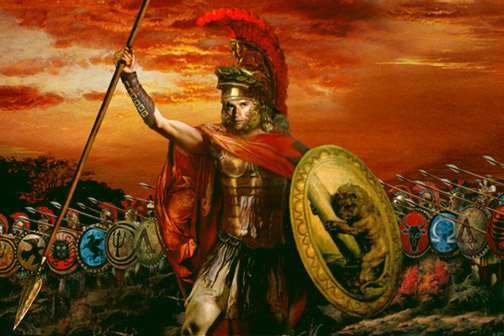
Alexander The Great
How can history have the exact dates of Alexander's birth and death over 500 years earlier when, outside the Bible, history, first of all, makes no mention of Jesus nor of Jesus' exact dates of birth and death?
Didn’t Jesus, son of God, also die at age 33? Exactly what year was Jesus born? What year did Jesus die?
The Bible claims that King Herod, a true historical character, heard that Jesus was born in Bethlehem so to become King of the Jews.
Herod killed all of Bethlehem's male babies 2 years old and younger so that couldn't happen.
History claims that King Herod died in 4 BC. Scholars claim that Jesus was born between 4 - 6BC.
How could Jesus Christ be born 4 - 6 years before Himself?
If Jesus was born on December 25th, why does the New Year calendar start January 1st?
Hercules was crucified on a mount. His last words were: It is finished.
Myth declares He, and his mother, ascended to Heaven.
Hercules was considered to be The Son of God.
Jesus was crucified on a mount. His last words were: It is finished.
Jesus was voted by Constantine's clergy to be "The Son of God".
All religions consider themselves to be THE TRUTH while declaring that all others are not.
More human beings have been slaughtered in the name of God than in any other cause.
If the concept of God is the cause, can the abandonment of God be a solution?
It’s not having a superior mind that matters so much as having the ability to use that mind.
The lowest form of thought is a mind-set belief; while, the highest form of thought is to question.
The highest flattery any literary effort could possibly receive is for people to question it.
Long before Moses, a Pharaoh, Amen-Ra, of the Egyptians, changed religion to the worshipping of one God called Horus whose adversary was Set.
Any current Pharaoh was considered to be the reincarnation of God.
Behold! Horus and Set is another comparison to Jesus and Satan. What a coincidence!
Horus baptized. He and Jesus both were called “The Lamb” and had 12 followers.
Lamaism, a form of Buddhism, has had 14 men called the Dalai Lama “God’s Lamb”.
Here are some men, all before Jesus, who, by coincidence, are claimed to be of virgin birth, to be The Son of God, who were all teaching by age 12.
A King killed all male infants trying to get each of them.
Each began his ministry at 30 and was killed on the cross at age 33, all BC (Before Christ).
Thulis of Egypt 1700
Krishna of India 1200
Crite of Caldea 1200
Atys 1170
Thammuz of Syria 1160
Prometheus 847
Hesus of the Druids 834
Indra of Tibet 725
Bali 725
Iao of Napal 622
Sakia 600
Alcesios 600
Mirthra of Persia 600
Quexalcote of Mexico 587
Wattoba 552
Quirinus of Rome 506
Didn’t a King also kill all the male babies when Moses and Jesus were born?
Although, I view all religion as myth, I feel more like I do now than I did before. GWD
Saviors Borrowed?
Has the Gospel borrowed historical accounts describing Jesus from previous Eastern scriptures which existed centuries before the Bible?
Krishna was depicted as if crucified.
The Persian remembered only the atoning sufferings on the cross of Mithras the Mediator.
Aztecs prayed for the return of their crucified savior, Quexalcoatl, and were rewarded with the murderous acts of Cortez.
Caucasians chanted praises to their slain Divine Intercessor, Prometheus, for voluntarily offering himself upon the cross for the sins of a fallen race. Yet the Christian disciple hugs to his bosom the bloody cross of the murdered Jesus, confident that only one god ever died for the sins of man.
To retain their following, Christianity is based on unchangeable dogmas which disciples must accept to the exclusion of all knowledge adverse to their own creed. Whenever they are able they actually destroy contrary evidence for fear of rivalry. Then they magnify their own religion to a unique position above all others.

The earlier Christian saints, having determined like Paul, to know only Jesus Christ and him crucified, made stern efforts to obliterate from the page of history facts damaging to their case.
A report on the Hindu religion, made out by a deputation from the British Parliament, sent to India to examine their sacred books and monuments, was left in the hands of a Christian bishop at Calcutta, with instructions to forward it to England. On its arrival in London, it was so horribly mutilated as to be scarcely recognizable. The account of the crucifixion was gone. The inference is patent.
The disciples of the Christian faith have burnt books, blotted out passages and bowdlerized testaments which suggested the opposite of their belief. Not only that, they have demolished monuments showing crucifixions of previous atoning gods so that they are now unknown. Hence, the disbelief of Christians when other cases are mentioned.
Kersey Graves, in a well known book written over a century ago, gives examples of sixteen crucified gods or saviors. Most are very ancient and arguable, depending upon the interpretation of pictures or sculptures since no original written sources now exist, often victims of Christians determined to preserve the memory of only one crucified god.
Kersey Graves
For the same reasons the dates of their occurrence are doubtful and because chronology before the time of Alexander the Great (330 BC) is far from certain, and the dating of icons, especially from distant or isolated cultures is uncertain.
Even mainstream studies of the ancient Near East are involved in controversy over dates, Peter James for example claiming in a well argued case that several centuries have been mistakenly inserted into near Eastern chronologies. It is certain these crucifixions occurred before the time of Christ, but their exact date cannot be fixed.
These crucifixions are not vouchsafed as actual occurrences. The objective is not to prove them real events but simply that the belief in the crucifixion of gods was prevalent long before the crucifixion of Christ.
To establish this point then six will prove it as well as sixteen. Indeed, one case is sufficient. The reader is left to decide.
Tammuz of Mesopotamia 1160 B.C.
Tammuz
Tammuz was a god of Assyria, Babylonia and Sumeria where he was known as Dumuzi.
He is commemorated in the name of the month of June, Du'uzu, the fourth month of a year which begins at the spring equinox.
The fullest history extant of this savior is probably that of Ctesias (400 BC), author of Persika.
The poet has perpetuated his memory in rhyme.
Trust, ye saints, your Lord restored, Trust ye in your risen Lord; For the pains which Tammuz endured our salvation have procured.
Tammuz was crucified as an atonement offering: Trust ye in God, for out of his loins salvation has come unto us. Julius Firmicus speaks of this God rising from the dead for the salvation of the world.
This savior, which long preceded the advent of Christ, filled the same role in sacred history.
Wittoba is represented in his story with nail-holes in his hands and the soles of his feet.
Nails, hammers and pincers are constantly seen represented on his crucifixes and are objects of adoration among his followers, just as the iron crown of Lombardy has within it a nail claimed to be of his true original cross, and is much admired and venerated for that reason.
The worship of this crucified God prevails chiefly in the Travancore and other southern states of India in the region of Madura.
Iao of Nepal 622 B.C.
Iao was crucified on a tree in Nepal. The name of this incarnate god and oriental savior occurs frequently in the Holy Bibles and sacred books of other countries. Some suppose that Iao is the root of the name of the Jewish God, Yehouah (Jehovah), often abbreviated to Yeho.
Hesus of the Celtic Druids 834 B.C.The Celtic Druids depict their god Hesus as having been crucified with a lamb on one side and an elephant on the other, and that this occurred long before the Christian era.
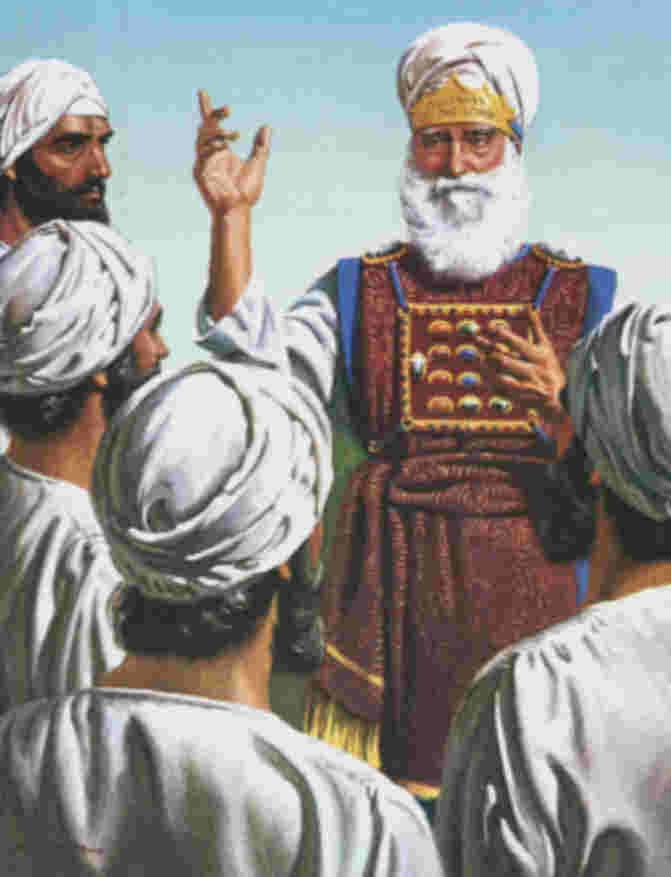
Hesus - Celtic Druid
The elephant, being the largest animal known, was chosen to represent the magnitude of the sins of the world, while the lamb, from its proverbial innocent nature, was chosen to represent the innocence of the victim, the god offered as a propitiatory sacrifice.
We have the Lamb of God taking away the sins of the world. The Lamb of God could therefore have been borrowed from the Druids.
This legend was found in Gaul long before Jesus Christ was known to history.
Quezalcoatl of Mexico 587 B.C.
Quezalcoatl
Historical authority of the crucifixion of this Mexican god is explicit, unequivocal and ineffaceable.
The evidence is tangible, and indelibly engraved upon metal plates.
One of these plates represents him as having been crucified on a mountain.
Another represents him as having been crucified in the heavens, as St Justin tells us Christ was.
Sometimes he is represented as having been nailed to a cross, sometimes with two thieves hanging with him, and sometimes as hanging with a cross in his hand.
Quirinius of Rome 506 B.C.
Quirinius Of Rome
The crucifixion of this Roman savior is remarkable for the parallel features to that of the Judean savior, not only in the circumstances of his crucifixion, but also in much of his antecedent life.
He is represented, like Christ:
As having been conceived and brought forth by a virgin.
His life was sought by the reigning king, Amulius.
He was of royal blood, his mother being of kingly descent. He was put to death by wicked hands or crucified. At his mortal exit the whole earth is said to have been enveloped in darkness, as in the case of Christ, Krishna, and Prometheus. And finally he is resurrected, and ascends back to heaven.
Prometheus 547 B.C.
Prometheus
The crucifixion of Prometheus of Caucasus, described by Seneca, Hesiod, and other writers, states that he was nailed to an upright beam of timber, to which were affixed extended arms of wood, and that this cross was situated near the Caspian Straits. The modern story of this crucified God, which has him bound to a rock for thirty years, while vultures preyed upon his vitals, is a Christian fraud.
The poet, in portraying his propitiatory offering, says:
Lo! streaming from the fatal tree His all atoning blood, Is this the Infinite?–Yes, 'tis he,
Prometheus, and a god!
Well might the sun in darkness hide, And veil his glories in, when God, the great Prometheus, died For man the creature's sin.
It is doubtful whether there is to be found in the whole range of Greek letters deeper pathos than that of the divine woe of the beneficent demigod Prometheus, crucified on his Scythian crags for his love to mortals.
When he dies:
That the whole frame of nature became convulsed.
The earth shook, the rocks were rent, the graves were opened, and in a storm, which seemed to threaten the dissolution of the universe, the solemn scene forever closed, and Our Lord and saviour Prometheus gave up the ghost.
The cause for which he suffered was his love for the human race. The whole story of Prometheus' crucifixion, burial and resurrection was acted in pantomime in Athens five
hundred years before Christ, which proves its great antiquity.
Minutius Felix, one of the most popular Christian writers of the second century addresses the people of Rome:
Your victorious trophies not only represent a simple cross, but a cross with a man on it, and this man St. Jerome calls a god.
These coincidences are more proof that the tradition of the crucifixion of gods has been very long prevalent among the heathen.
Thulis of Egypt 1700 B.C
Decrepitude - Ultima Thule
Thulis of Egypt, whence comes Ultima Thule, died the death of the cross about thirty-five hundred years ago.
Ultima Thule: This Egyptian saviour appears also to have been known as Zulis.
His history is curiously illustrated in the sculptures, made seventeen hundred years BC of a small, retired chamber lying nearly over the western adytum of the temple.
Twenty-eight lotus plants near his grave indicate the number of years he lived on the earth.
After suffering a violent death, he was buried, but rose again, ascended into heaven, and there became the judge of the dead, or of souls in a future state.
He came down from heaven to benefit mankind, and that he was said to be full of grace and truth.
Indra of Tibet 725 B.C.
Indra
This Tibetan saviour is shown nailed to the cross. There are five wounds, representing the nail-holes and the piercing of the side.
The antiquity of the story is beyond dispute.
Marvelous stories are told of the birth of the Divine Redeemer.
His mother was a virgin of black complexion, and hence his complexion was of the ebony hue, as in the case of Christ and some other sin-atoning saviors.
He descended from heaven on a mission of benevolence, and ascended back to the heavenly mansion after his crucifixion.
He led a life of strict celibacy, which, he taught, was essential to true holiness.
He inculcated great tenderness toward all living beings.
He could walk upon the water or upon the air; he could foretell future events with great accuracy.
He practiced the most devout contemplation, severe discipline of the body and mind, and completely subdued his passions.
He was worshiped as a god who had existed as a spirit from all eternity, and his followers were called Heavenly Teachers.
Alcestos of Euripides 600 B.C
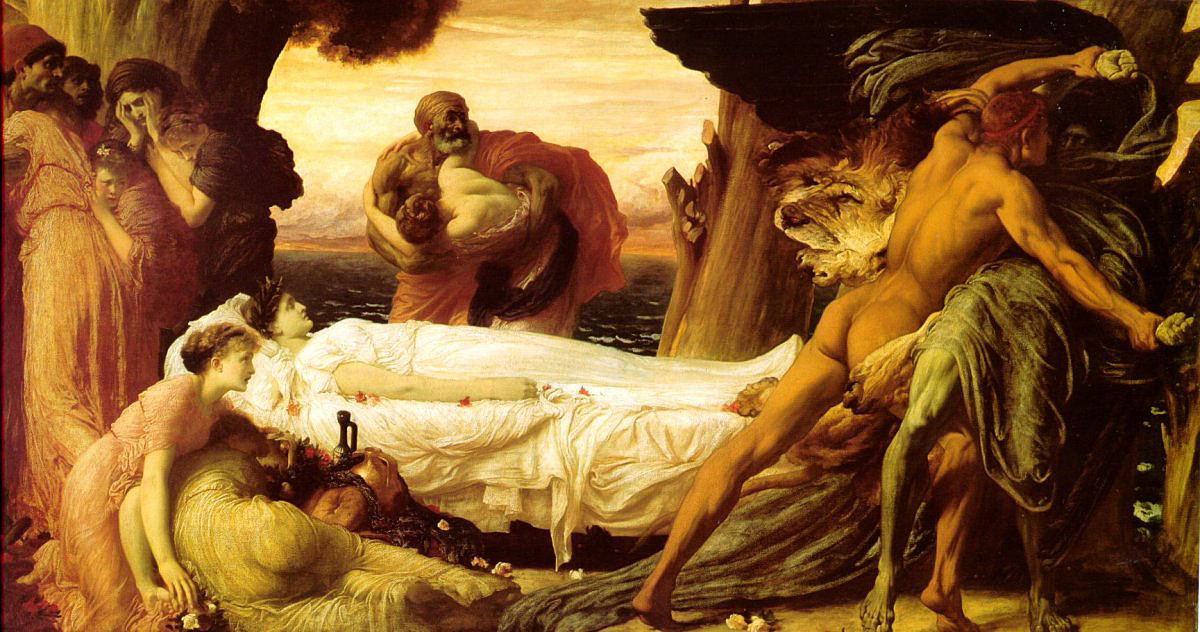
Hercules Wrestling With Death For The Body Of Alcestis
A less usual crucified God was Alcestos, who was female, the only example of a feminine God atoning for the sins of the world upon the cross.
The doctrine of the trinity and atoning offering for sin was inculcated as a part of her religion.
Attis of Phrygia 1170 B.C.
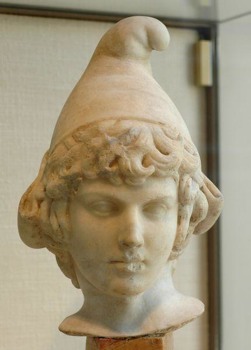
Attis
Speaking of this crucified Messiah, the Anacalypsis informs us that several histories are given of him, but all concur in representing him as having been an atoning offering for sin.
And the Latin phrase suspensus lingo, found in his history, indicates the manner of his death.
He was suspended on a tree, crucified, buried and rose again.
Crite of Chaldaea 1200 B.C.
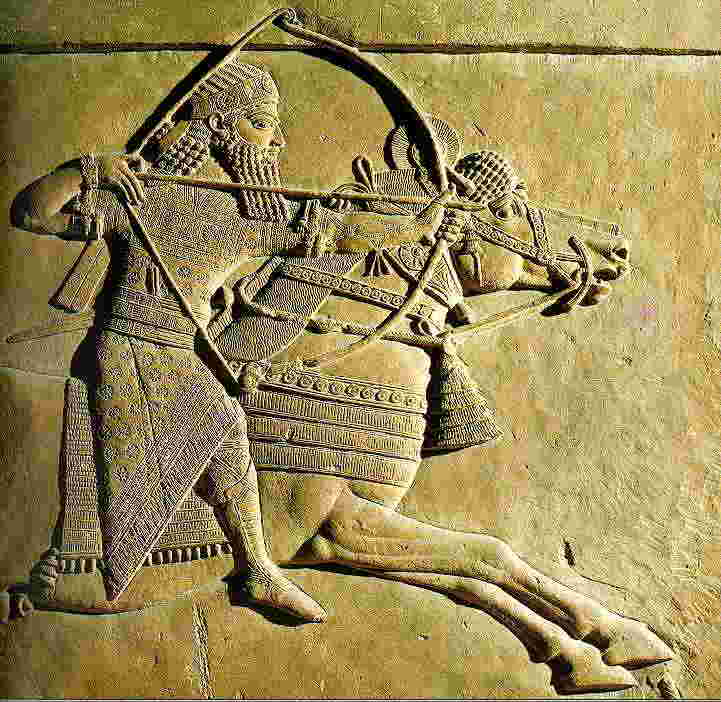
Crite Of Chaldaea
The Chaldeans have noted in their sacred books the crucifixion of a god with the above name.
He was also known as the Redeemer, and was styled the Ever Blessed Son of God, the saviour of the Race, the Atoning Offering for an Angry God.
When he was offered up, both heaven and earth were shaken to their foundations.
Bali of Orissa 725 B.C.
Bali
In Orissa, in Asia, they have the story of a crucified God, known by several names, including the above, all of which, we are told, signify Lord Second, his being the second person or second member of the trinity.
Most of the crucified gods occupied that position in a trinity of gods, the Son, in all cases, being the atoning offering.
This God Bali was also called Baliu, and sometimes Bel. Monuments of this crucified God, bearing great age, may be found amid the ruins of the magnificent city of Mahabalipore, partially buried amongst the figures of the temple.
Mithras of Persia 600 B.C.
Mithras
This Persian God was slain upon the cross to make atonement for mankind, and to take away the sins of the world.
He was born on the twenty-fifth day of December, and crucified on a tree.
Christian writers both speak of his being slain, and yet both omit to speak of the manner in which he was put to death.
And the same policy has been pursued with respect to other crucified gods of the pagans, as we have shown.
Devatat of Siam, Ixion of Rome, Apollonius of Tyana
Ixion, 400 B.C.
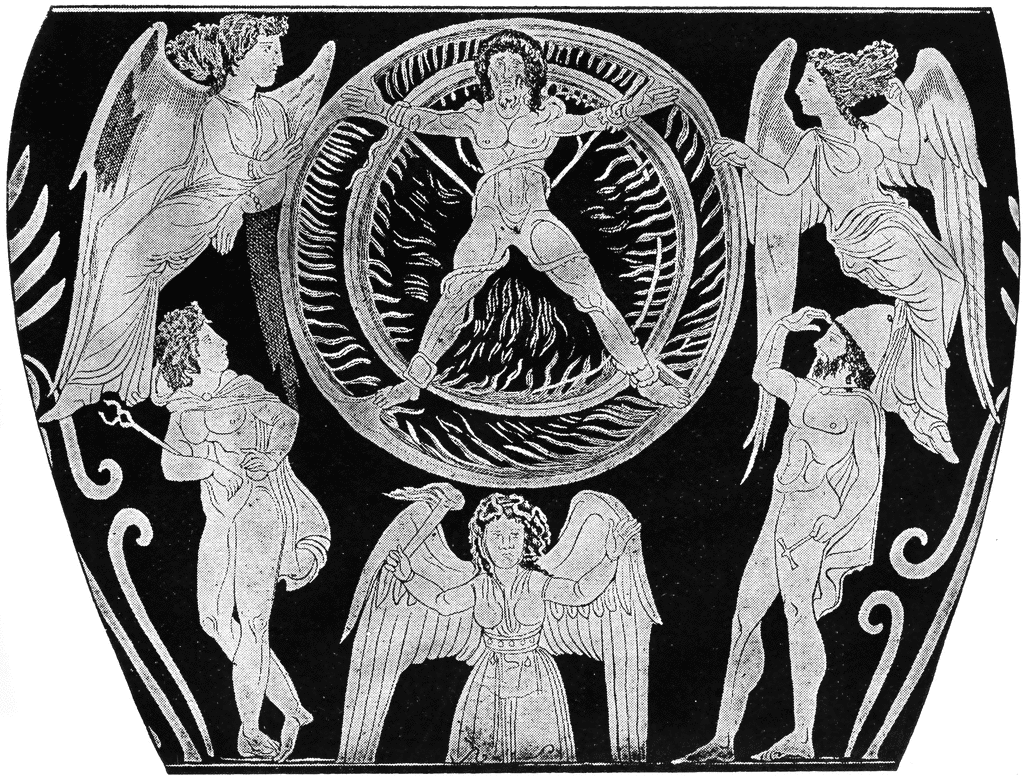
Ixion
He bore the burden of the world, the sins of the world, on his back while suspended on the cross.
He was therefore called the crucified spirit of the world.
It is curious that Christian writers will recount a long list of miracles and remarkable incidents in the life of Apollonius of Tyana, the Cappadocian saviour, forming a parallel to those of the Christian saviour, yet say not a word about his crucifixion.
Christian writers find it necessary to omit the crucifixion of these saviors fearing the telling would lessen the spiritual force of the crucifixion of Christ, which has to be unique.
They thus exalted the tradition of the crucifixion into the most important dogma of the Christian faith.
Hence, their efforts to conceal from the public the fact that it is of pagan origin.
Mackey's Lexicon of Freemasonry says that Freemasons secretly taught the doctrine of the crucifixion, atonement and resurrection preceded the Christian era, and that similar doctrines were taught in all the ancient mysteries.
Freemasons
Can't remember all where I got this from. This kind of stuff is all over the net though.
What one person, who you know, would be impacted if sent to this site?
Recommended Youtubes:
http://www.youtube.com/watch?v=7ji2Y8DddaUhttp://truthbeknown.com/
http://www.consciousmedianetwork.com/members/acharya.
htmhttp://www.zeitgeistmovie.com/
Any corrections, questions? or comments?
Thank You!
gary@gdevaney.com
|